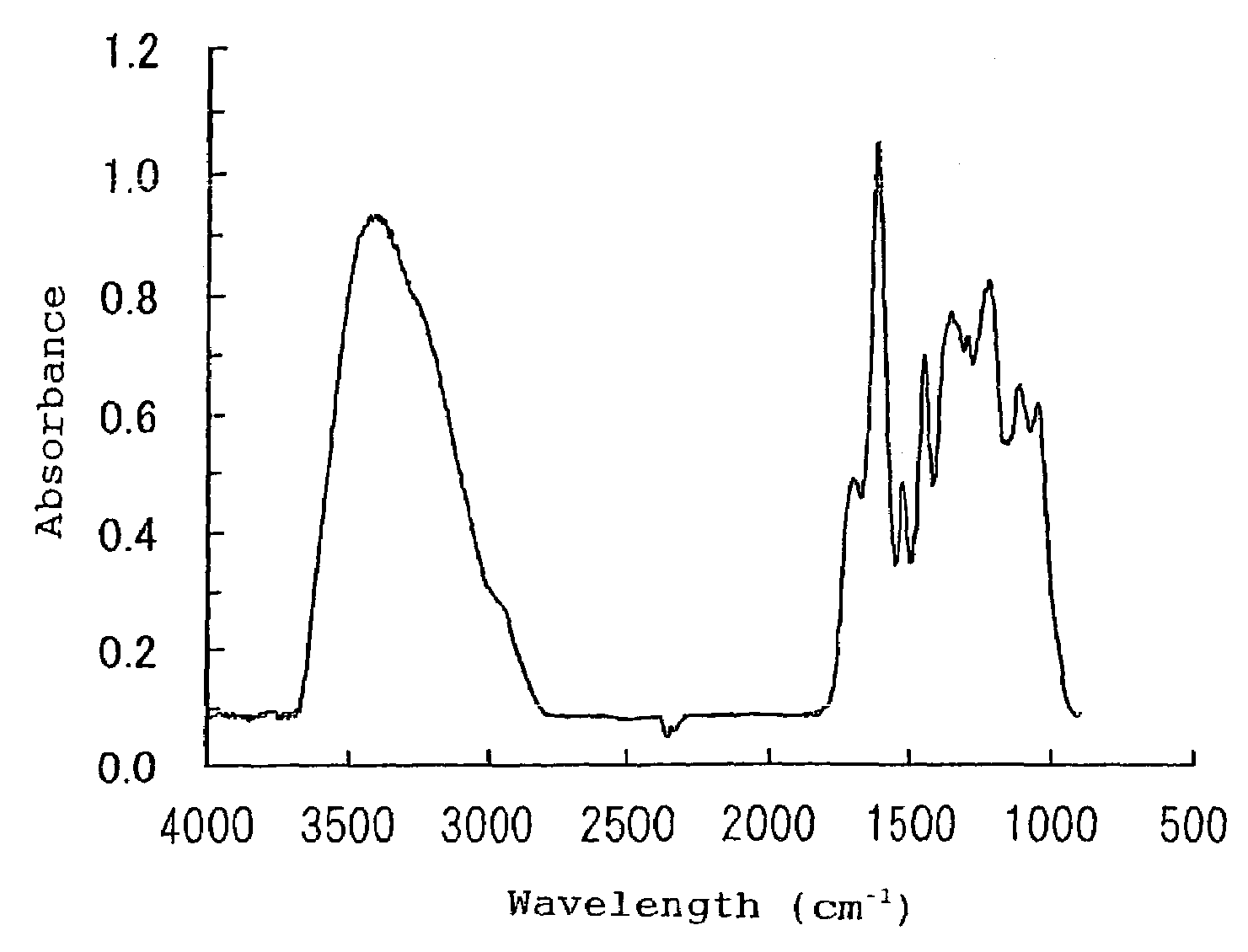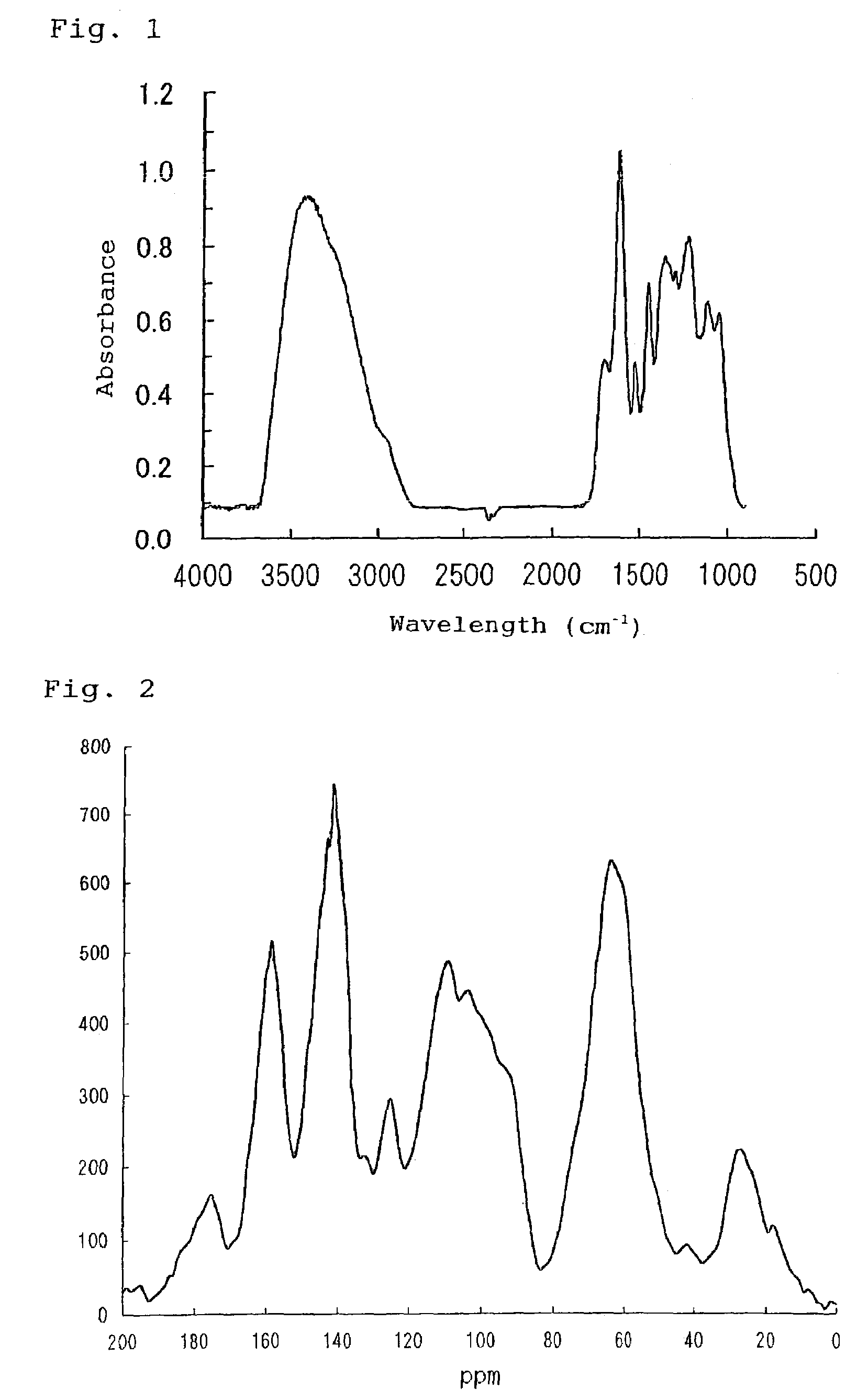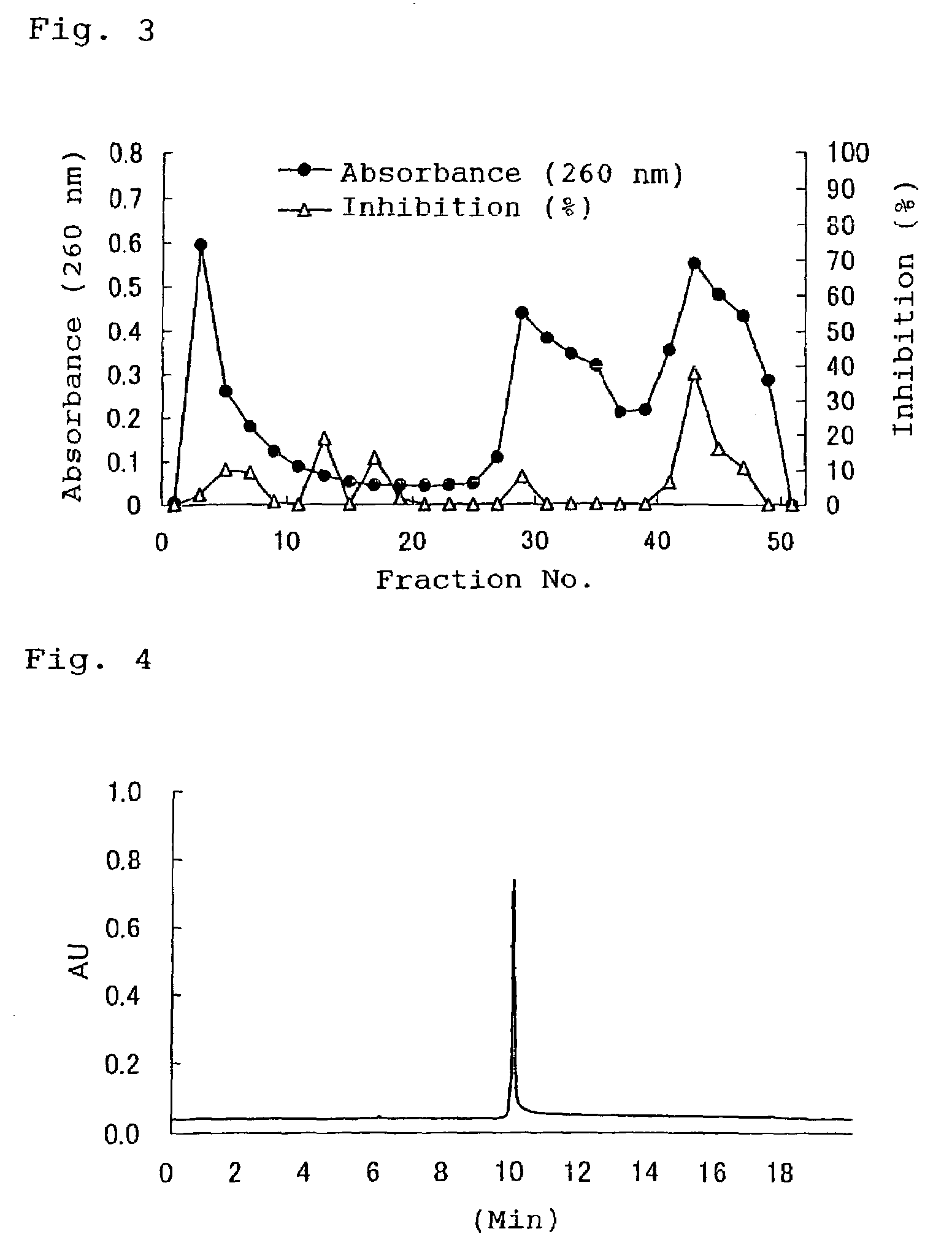Alpha-amylase activity inhibitors
a technology of -amylase and inhibitors, which is applied in the field of -amylase activity inhibitors, can solve the problems that their -amylase inhibitory activity is not necessarily satisfactory for the purpose of achieving the desired dieting effect, and achieve the effect of high -amylase inhibitory activity
- Summary
- Abstract
- Description
- Claims
- Application Information
AI Technical Summary
Benefits of technology
Problems solved by technology
Method used
Image
Examples
example 1
Preparation of Guava Extract
[0065](1) Guava leaves (produced in the People's Republic of China, Kuanhsi) were dried, roasted at 121° C. for 15 minutes, and minutely cut into pieces of about 5 mm. The thus-obtained broken leaves (100 kg) were immersed in hot water (80° C., 2000 kg), to thereby effect extraction for 25 minutes. The resultant extract was cooled to 30° C. or lower, and centrifuged at 1500 rpm for 10 minutes so as to clear the solution, thereby yielding guava leaf extract.
[0066](2) Unripe guava fruit extract was prepared by subjecting unripe guava fruit (1 part by weight) to extraction by use of a solvent (approximately 10 parts by weight) at 90° C. for 25 minutes.
[0067](3) The unripe guava fruit extract was added to the thus-obtained guava leave extract in an amount of approximately 0.1–0.2%, thereby preparing guava extract.
example 2
Preparation of Guava Polyphenols
[0068]The guava extract which had been prepared in Example 1 was filtered by means of an ultrafilter (for fractionating molecular weight of 5000), to thereby obtain a fraction of molecular weight of 5000 or more. The thus-obtained fraction was dialyzed against a dialysis membrane (for fractionating molecular weight of 6000–8000), and the separated inner liquid was freeze-dried, to thereby prepare crude polyphenols. The crude polyphenols were dissolved in a 0.02 mol / L aqueous solution of sodium dihydrogenphosphate, and the resultant solution was purified by means of hydrophobic chromatography (macro-prep column containing a butyl-group-linked filler). Specifically, after the filler was washed with a 0.02 mol / L aqueous solution of sodium dihydrogenphosphate in a volume twice the volume of the column, elution was carried out by use of a mixture, in a volume twice the volume of the column, containing a 0.02 mol / L aqueous solution of sodium dihydrogenphosp...
example 3
α-Amylase Inhibitory Activity
[0070]The effects, on α-amylase, of the guava extract and the purified guava polyphenols obtained in Examples 1 and 2, respectively, were investigated.
[0071]α-Amylase inhibitory activity was measured through a customary method. Specifically, α-amylase derived from pig pancreatic juice was mixed with a 0.02 M sodium phosphate buffer (pH 6.5), to thereby prepare an amylase solution. A substrate solution was prepared from 8% soluble starch and a 0.08 M sodium phosphate buffer (pH 6.5). Mixtures of the enzyme, substrate solution, and a test solution, or a mixture of the enzyme, substrate solution, and water serving as a control were allowed to react at 37° C. for seven minutes. The reaction was terminated at 100° C. Formed maltose was determined through HPLC by use of arabinose as an internal standard substance. The inhibitory activity was calculated by the following equation. The results are shown in Table 3.
Inhibitory activity (%)={1−(amount of formed malt...
PUM
 Login to View More
Login to View More Abstract
Description
Claims
Application Information
 Login to View More
Login to View More - R&D
- Intellectual Property
- Life Sciences
- Materials
- Tech Scout
- Unparalleled Data Quality
- Higher Quality Content
- 60% Fewer Hallucinations
Browse by: Latest US Patents, China's latest patents, Technical Efficacy Thesaurus, Application Domain, Technology Topic, Popular Technical Reports.
© 2025 PatSnap. All rights reserved.Legal|Privacy policy|Modern Slavery Act Transparency Statement|Sitemap|About US| Contact US: help@patsnap.com



